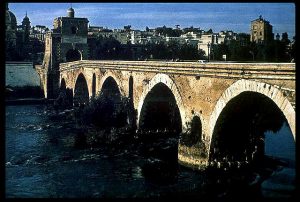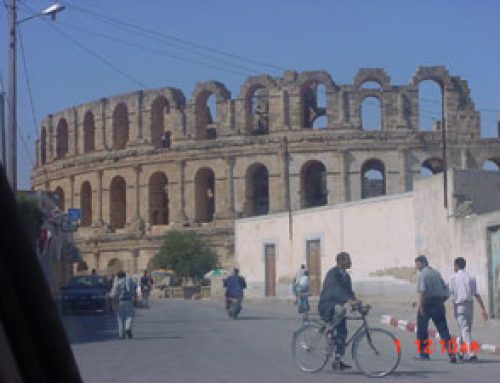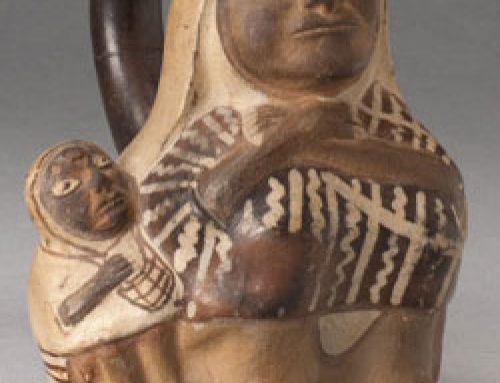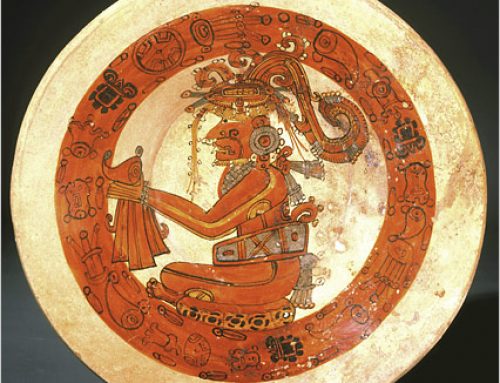
The Roman emperor Constantine becomes a Christian – the first Christian emperor
Constantine becomes an Emperor
In 312 AD, the Great Persecution was still going on in the Eastern part of the Roman Empire (though not really in the West). But then Constantine became a Roman Emperor. He had had a vision which made him convert to Christianity.
Great Persecution
History of Christianity
Roman religion
All our ancient Rome articles
Constantine becomes a Christian
As soon as he won the Battle of the Milvian Bridge, Constantine seems to have thought of himself as a Christian.
Battle of the Milvian Bridge
Arch of Constantine
What is a bishop?
The Donatist controversy
That same winter, Constantine was already writing letters to Christian bishops about church controversies and had bishops with him at court to advise him about Christian issues. One of the first controversies that Constantine heard about was the Donatist controversy.

The Milvian Bridge in Rome, where Constantine fought his battle with Maxentius
The Edict of Milan
By 313 AD, Constantine and his co-emperor Licinius issued the Edict of Milan. This law specifically guaranteed religious freedom to Christians throughout the Roman Empire, as Cyrus the Great had done in the Persian Empire almost a thousand years earlier. The Edict of Milan states that:
“we should let both the Christians and all others follow whatever religion they wanted to, so that whatever God there is in heaven may be happy and pleased with us and with all our subjects.”
Why did Constantine become a Christian?
This is what Constantine’s Christianity was all about. He was mainly not interested in religion but in politics. If the Christian god was going to help him win battles, then he was going to worship the Christian god. Whatever worked.

This is how Constantine showed the Battle of the Milvian Bridge on the Arch of Constantine (early 300s AD)
Constantine got a lot of Christian advisors at his court to tell him what the Christian God wanted, so he could be sure to keep God on his side.
His advisors told him that God wanted Constantine to give a lot of money and land to the Church, and that God wanted the Church not to have to pay taxes, and Constantine did all those things. And Constantine settled (or tried to settle) the Donatist Controversy.
The Arian controversy
After Constantine finally got rid of Licinius and became emperor all by himself, he went on a tour of the Eastern part of the Empire to see what was going on there. He was upset to find that the Christians there were fighting over the Arian controversy, and he tried to settle their argument, but not very successfully.
What’s the Arian controversy?
Roman Egypt
Constantinople
When he founded the city of Constantinople (named after himself) in 324 AD, Constantine made it clear that this was going to be a Christian city, not like Rome which was still the capital of the old Roman religion. He had his children taught by Christian teachers (Arians).
Learn by doing: What does freedom of religion mean to you?
More about Constantine
Bibliography and further reading about Constantine:
The Rise of Christianity, by Don Nardo (1999). Easy reading, many essays by different experts.
A Short History of Christianity, by S. Tomkins (2006). Easy reading; it moves too fast, but does give a general sense of where Christianity came from and how it got where it is today. Not much here on the role of women or non-Europeans in the development of Christian thought.
The History of the Church: From Christ to Constantine, by Eusebius (translated by G.A. Williamson) (Penguin). One of the main primary sources for the life of Constantine, written during Constantine’s lifetime by a bishop who was an eye-witness to many of these events. Surprisingly entertaining reading, considering how long ago it was written! (Some parts are pretty gross, though.)
Constantine and the Conversion of Europe, by A.H.M. Jones (originally 1962). By a leading expert, for adults. It’s a little out of date now, but still the clearest and best-written summary of Constantine’s life that I know of.




